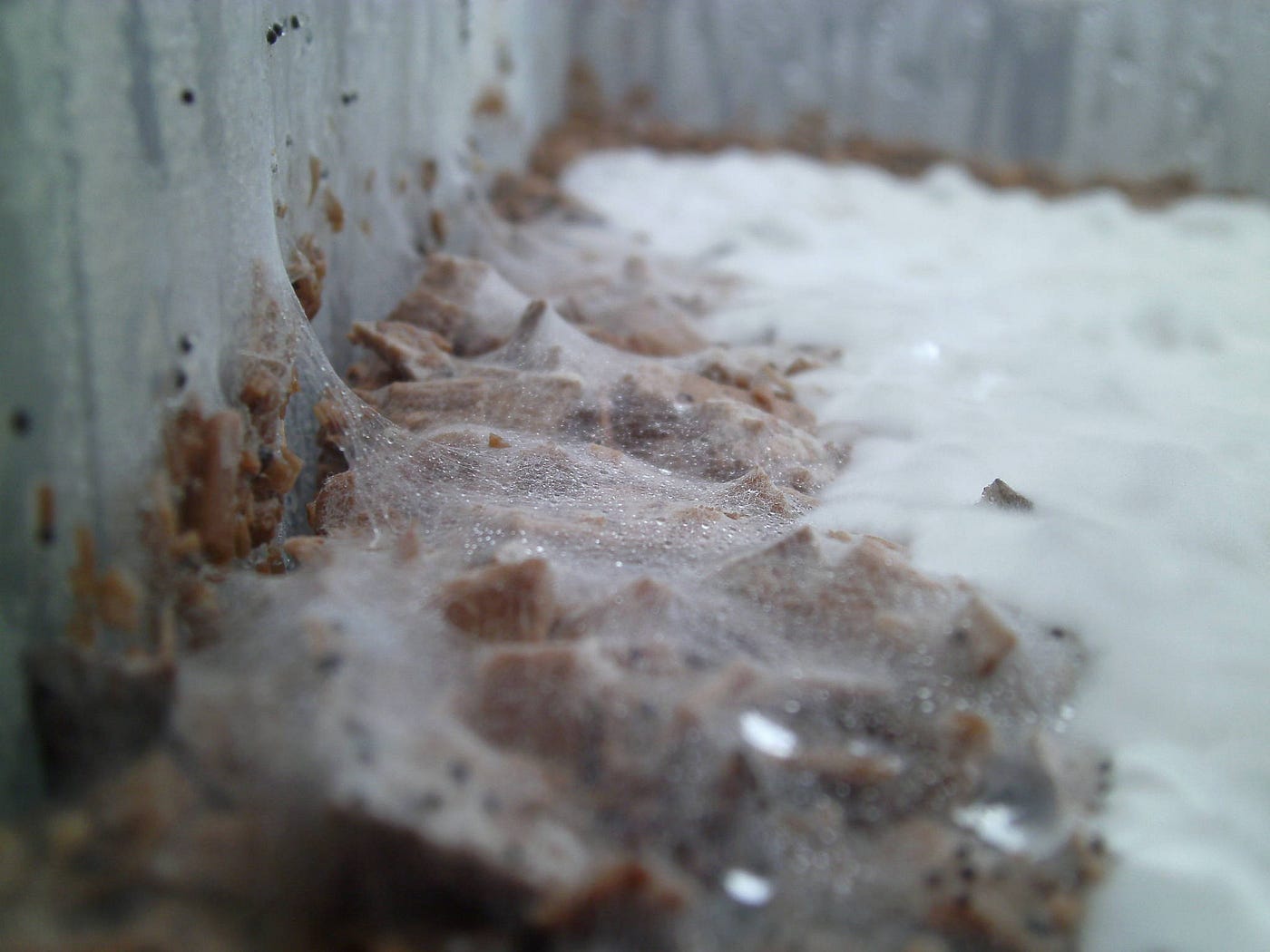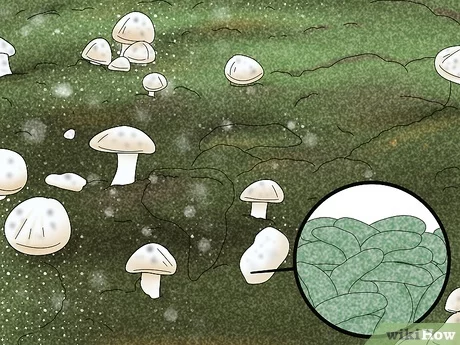To prevent mold in mushrooms, ensure proper ventilation and humidity control. Use clean, sterile growing environments.
Mushrooms are a delicious and nutritious addition to many dishes, but they can be susceptible to mold. Maintaining the right conditions is crucial for healthy mushroom growth. Proper ventilation allows fresh air to circulate, reducing moisture buildup. Controlling humidity levels prevents the environment from becoming too damp, which can foster mold growth.
Regularly cleaning and sterilizing the growing area also helps eliminate mold spores. Monitoring these factors ensures a successful and mold-free mushroom harvest. By taking these steps, you can enjoy fresh, healthy mushrooms without the worry of mold contamination.
Causes Of Mold
Mold in mushrooms can be a serious issue. Understanding its causes helps in prevention. Various factors can lead to mold growth. These include contaminants and environmental conditions. Let’s explore these causes in detail.
Common Contaminants
Contaminants are a major cause of mold. They can come from different sources. Here are some common contaminants:
-
- Spores from other fungi
- Bacteria from unclean tools
- Insects carrying mold spores
Using sterile tools is essential. Always clean your equipment. Ensure your substrate is free from contaminants. Proper hygiene can prevent mold growth.
Environmental Factors
Environmental conditions also play a role. Mold thrives in certain conditions. Here are some key factors:
| Factor | Ideal Condition | Risk Condition |
|---|---|---|
| Humidity | 50-60% | Above 70% |
| Temperature | 55-70°F | Above 75°F |
| Airflow | Good ventilation | Stagnant air |
Maintaining the right environment is crucial. Use a hygrometer to monitor humidity. Keep the temperature within the ideal range. Ensure good airflow to prevent mold growth.

Credit: www.wikihow.com
Choosing The Right Substrate
Mushrooms are delicate and need a clean environment to grow. Choosing the right substrate is crucial to prevent mold. A good substrate helps mushrooms thrive and keeps mold away.
Types Of Substrates
There are several types of substrates you can use. Each type has its own benefits.
-
- Sawdust: This is a popular choice for many mushroom growers. It is easy to find and use.
- Straw: Straw is great for growing mushrooms like oyster mushrooms. It is cheap and effective.
- Manure: Some mushrooms grow well in manure, like button mushrooms.
- Coffee Grounds: Used coffee grounds are a good substrate. They are rich in nutrients.
Preparation Method
Preparing your substrate correctly is important. Proper preparation prevents mold growth.
Sawdust:
-
- Sterilize the sawdust by boiling it.
- Dry the sawdust completely.
- Add mushroom spawn to the sawdust.
Straw:
-
- Chop the straw into small pieces.
- Soak the straw in hot water for an hour.
- Drain the water and let the straw cool.
- Mix the mushroom spawn with the straw.
Manure:
-
- Compost the manure for a few weeks.
- Pasteurize the manure to kill mold spores.
- Let the manure cool before adding mushroom spawn.
Coffee Grounds:
-
- Collect used coffee grounds.
- Dry the coffee grounds completely.
- Mix the mushroom spawn with the coffee grounds.
Maintaining Optimal Humidity
To prevent mold in mushrooms, maintaining optimal humidity is crucial. Mushrooms thrive in specific humidity levels. Too much or too little moisture can lead to mold growth. Keeping the right balance ensures healthy mushroom growth.
Humidity Control Tools
Using proper humidity control tools helps maintain the right environment. Hygrometers measure humidity levels accurately. Humidifiers add moisture to the air when needed. Dehumidifiers remove excess moisture, preventing dampness.
| Tool | Function |
|---|---|
| Hygrometer | Measures humidity levels |
| Humidifier | Adds moisture |
| Dehumidifier | Removes excess moisture |
Ideal Humidity Levels
Mushrooms need a specific range of humidity to grow well. The ideal humidity level for mushrooms is between 85% and 95%. Maintaining this range prevents mold and promotes healthy growth.
To achieve this, monitor humidity daily. Adjust using humidifiers or dehumidifiers as needed.
-
- Check humidity levels using a hygrometer.
- Use a humidifier if levels are below 85%.
- Use a dehumidifier if levels are above 95%.
By following these steps, you can ensure your mushrooms grow mold-free.
Proper Ventilation
Proper ventilation is crucial to prevent mold in mushrooms. Without good airflow, mold can grow quickly. This section will explore effective methods to ensure your mushrooms stay mold-free.
Airflow Techniques
Airflow is vital for preventing mold. Here are some techniques to improve airflow:
-
- Use fans: Place fans to circulate air around your mushrooms.
- Open windows: Let fresh air in daily to reduce humidity.
- Ventilation systems: Install systems to keep air moving.
Avoiding Stagnant Air
Stagnant air can lead to mold growth. Follow these tips to avoid it:
-
- Space out mushrooms: Give each mushroom enough room to breathe.
- Check for blockages: Ensure nothing is blocking airflow paths.
- Monitor humidity: Keep humidity levels under control with a hygrometer.
| Technique | Benefit |
|---|---|
| Fans | Improves air circulation |
| Open Windows | Reduces indoor humidity |
| Ventilation Systems | Keeps air moving continuously |
By following these tips, you can ensure your mushrooms stay mold-free. Proper ventilation is key!
Sanitizing Growing Area
Sanitizing the growing area is key to preventing mold in mushrooms. A clean environment ensures healthy mushroom growth. This section covers essential cleaning protocols and effective disinfectants.
Cleaning Protocols
Follow these steps to maintain a clean growing area:
-
- Remove Debris: Clear out any organic matter or waste.
- Wash Surfaces: Use soapy water to scrub walls and floors.
- Rinse Thoroughly: Ensure no soap residue remains.
- Dry Completely: Let all surfaces dry to avoid moisture buildup.
Effective Disinfectants
Use these disinfectants to kill harmful bacteria and mold spores:
| Disinfectant | Usage Instructions |
|---|---|
| Bleach Solution | Mix 1 part bleach with 10 parts water. Apply with a spray bottle. |
| Hydrogen Peroxide | Use a 3% solution. Spray directly on surfaces and let it air dry. |
| Isopropyl Alcohol | Apply 70% alcohol to surfaces. Allow to air dry for best results. |
Monitoring Temperature
Monitoring temperature is crucial for preventing mold in mushrooms. The right temperature keeps mold at bay and ensures healthy growth. Let’s explore how to maintain the perfect temperature for your mushrooms.
Temperature Ranges
Mushrooms need specific temperature ranges to grow well. Here are the ideal ranges:
| Mushroom Type | Optimal Temperature (°F) |
|---|---|
| Button Mushrooms | 55-60 |
| Oyster Mushrooms | 60-75 |
| Shiitake Mushrooms | 60-70 |
Thermometer Placement
Correct placement of the thermometer is essential. Follow these steps:
-
- Place the thermometer at mushroom level.
- Avoid direct sunlight on the thermometer.
- Check the thermometer daily for accurate readings.
Ensure the thermometer is clean and calibrated. An inaccurate thermometer can lead to mold issues.
By monitoring temperature carefully, you can prevent mold in mushrooms. Use the right tools and follow best practices for the best results.
Identifying Early Signs Of Mold
Mold in mushrooms can ruin an entire batch. Identifying early signs of mold is key to preventing this. Understanding visual indicators, smell, and texture changes can help you spot mold early. This ensures your mushrooms stay fresh and safe to eat.
Visual Indicators
Visual indicators are the easiest way to spot mold. Look for discoloration on the mushrooms. Mold often appears as white, green, or black spots. The surface may also look fuzzy. Check for any unusual growths or patches.
Smell And Texture Changes
Smell and texture changes are also early signs of mold. Fresh mushrooms have a mild, earthy smell. Moldy mushrooms often smell sour or musty. The texture also changes. Fresh mushrooms are firm and smooth. Moldy ones become slimy or sticky.
Here’s a quick table for easy reference:
| Indicator | Fresh Mushrooms | Moldy Mushrooms |
|---|---|---|
| Color | Consistent, natural color | White, green, or black spots |
| Smell | Mild, earthy | Sour, musty |
| Texture | Firm, smooth | Slimy, sticky |
To keep your mushrooms mold-free, check for these signs often. This helps ensure you catch mold early. By doing this, you can enjoy fresh, healthy mushrooms every time.
Harvesting Techniques
Preventing mold in mushrooms starts with proper harvesting techniques. Correct methods ensure mushrooms stay fresh and mold-free. Learn the best practices for timing, handling, and storage.
Timing Of Harvest
Harvest mushrooms at the right time. Watch for signs of maturity.
-
- Button stage: Small and firm, perfect for harvesting.
- Cap edges: Edges should be slightly curved under.
- Gills: Gills should be closed or barely opening.
Harvesting at the right stage prevents mold growth. Use clean tools to cut mushrooms. Avoid damaging the mycelium. This helps future growth and reduces mold risk.
Handling And Storage
Handle mushrooms gently to avoid bruising. Bruised mushrooms mold quickly.
-
- Use clean containers for gathering mushrooms.
- Store mushrooms in breathable materials.
- Keep them in a cool, dry place.
Proper storage is key. Use paper bags or perforated plastic bags. Avoid airtight containers. Moisture buildup causes mold. Check stored mushrooms daily. Remove any showing mold immediately.
| Storage Method | Benefits |
|---|---|
| Paper Bags | Allow air flow, prevent moisture buildup |
| Perforated Plastic Bags | Retain some moisture, prevent excessive drying |
Post-harvest Care
Post-harvest care is crucial for keeping mushrooms mold-free. Proper techniques ensure mushrooms stay fresh and safe. Let’s explore some effective methods.
Drying Methods
Drying mushrooms helps prevent mold. There are several drying methods:
- Air Drying: Spread mushrooms on a clean surface. Ensure proper air circulation. This method works best in a dry, warm place.
- Oven Drying: Preheat the oven to a low temperature (around 140°F). Place mushrooms on a baking sheet. Keep the oven door slightly open to let moisture escape. Check and turn mushrooms frequently.
- Dehydrator: Use a food dehydrator for consistent results. Set it to a low temperature. Arrange mushrooms in a single layer. This method is efficient and reliable.
Long-term Storage Solutions
Storing dried mushrooms properly is important to prevent mold. Here are some long-term storage solutions:
| Storage Method | Details |
|---|---|
| Airtight Containers: | Store mushrooms in airtight containers. This keeps out moisture and air. |
| Vacuum Sealing: | Use a vacuum sealer to remove air. This extends the shelf life. |
| Freezing: | Place dried mushrooms in freezer bags. This method prevents mold and pests. |
Implementing these post-harvest care techniques ensures your mushrooms remain mold-free. Proper drying and storage are key to maintaining freshness.

Credit: medium.com
Frequently Asked Questions
How Do You Store Mushrooms So They Don’t Mold?
Store mushrooms in a paper bag in the fridge. Keep them dry and avoid plastic bags. Ensure proper ventilation.
How To Get Rid Of Mold On Mushrooms?
Remove moldy mushrooms immediately. Store fresh mushrooms in a paper bag in the fridge. Ensure good ventilation to prevent mold.
How Do You Grow Mushrooms Without Mold?
To grow mushrooms without mold, maintain cleanliness, use sterile substrates, control humidity, ensure proper ventilation, and monitor conditions regularly.
How To Prevent Trichoderma When Growing Mushrooms?
Sterilize all equipment and growing mediums thoroughly. Maintain clean and sanitized growing conditions. Use high-quality spawn. Monitor humidity and temperature closely. Dispose of contaminated substrates immediately.
How To Prevent Mold In Mushrooms?
Store mushrooms in a paper bag in the fridge. Avoid plastic as it traps moisture, promoting mold growth.
Conclusion
Preventing mold in mushrooms is crucial for maintaining their quality. Regular cleaning and proper storage are essential steps. Ensure adequate ventilation and monitor humidity levels. By following these tips, you can enjoy fresh mushrooms longer. Keep your mushrooms mold-free and enhance their shelf life effortlessly.
